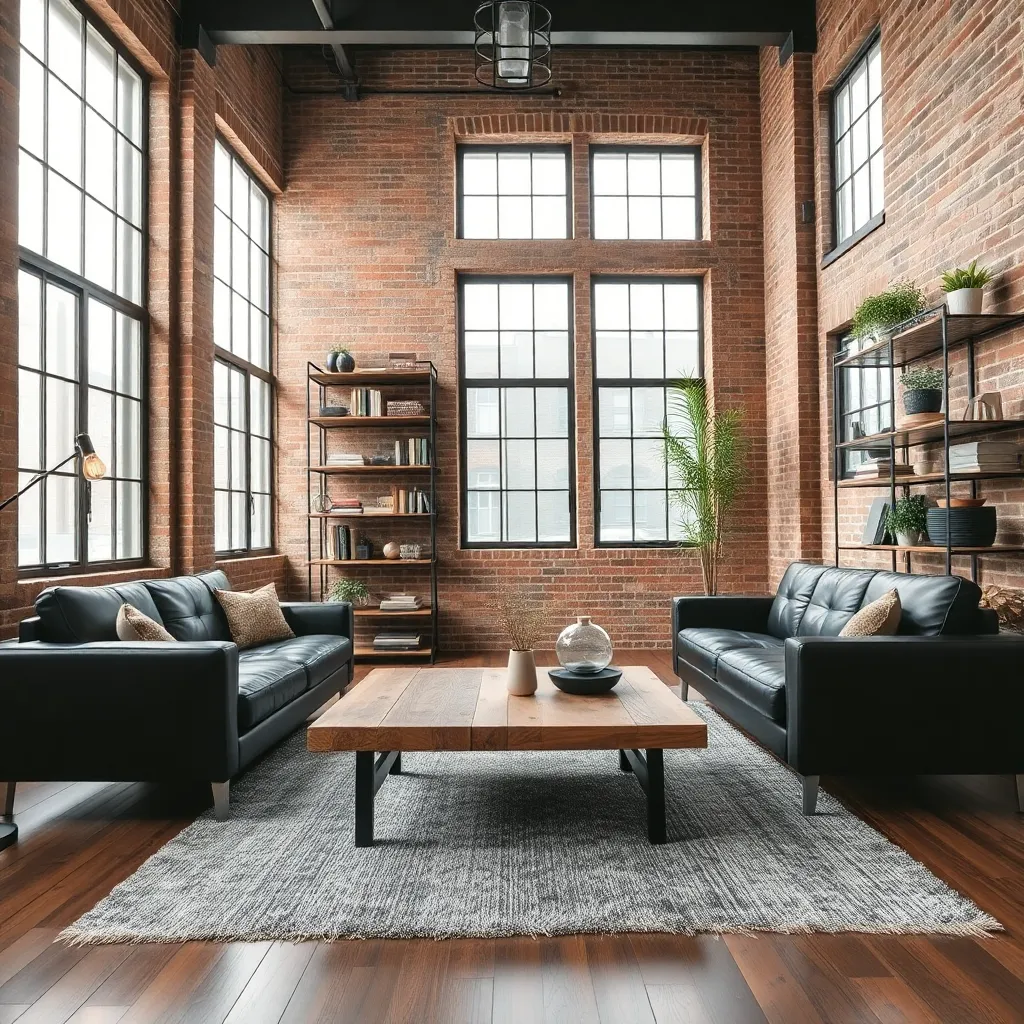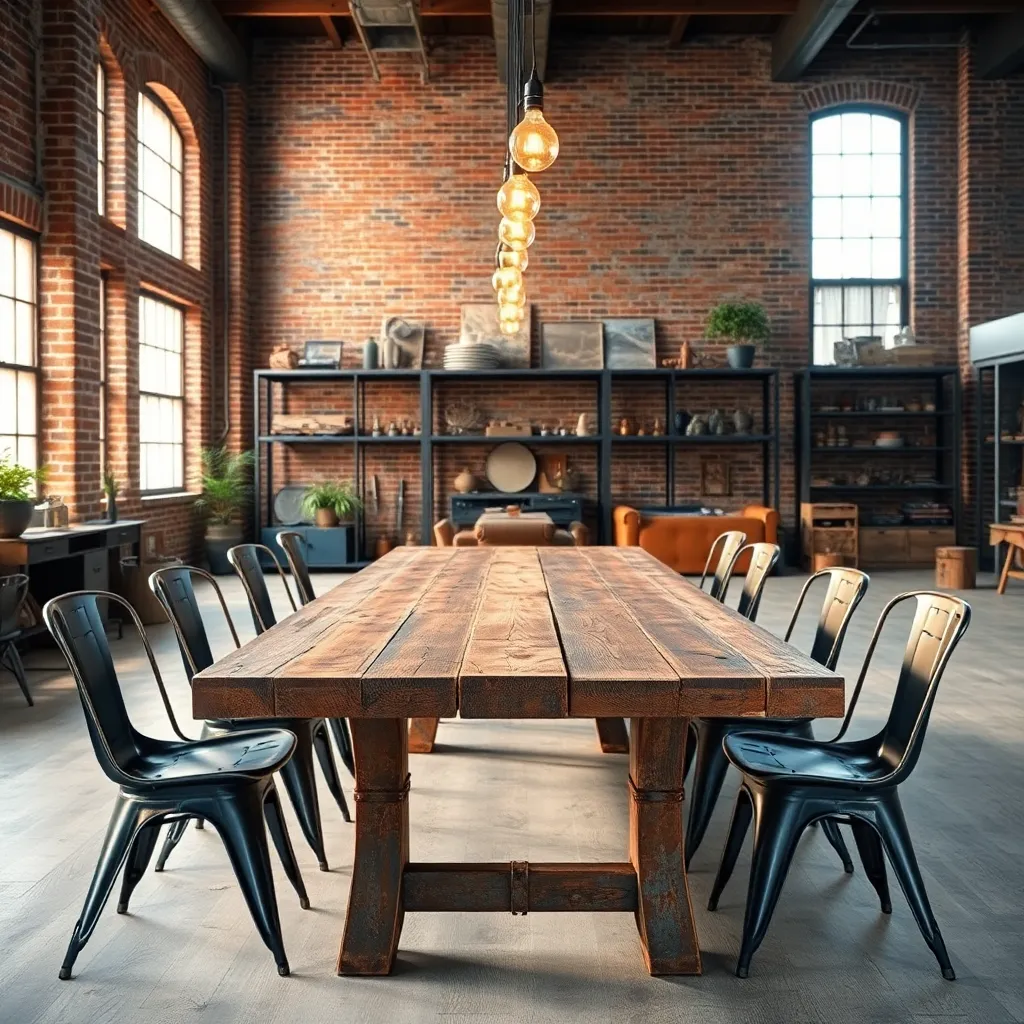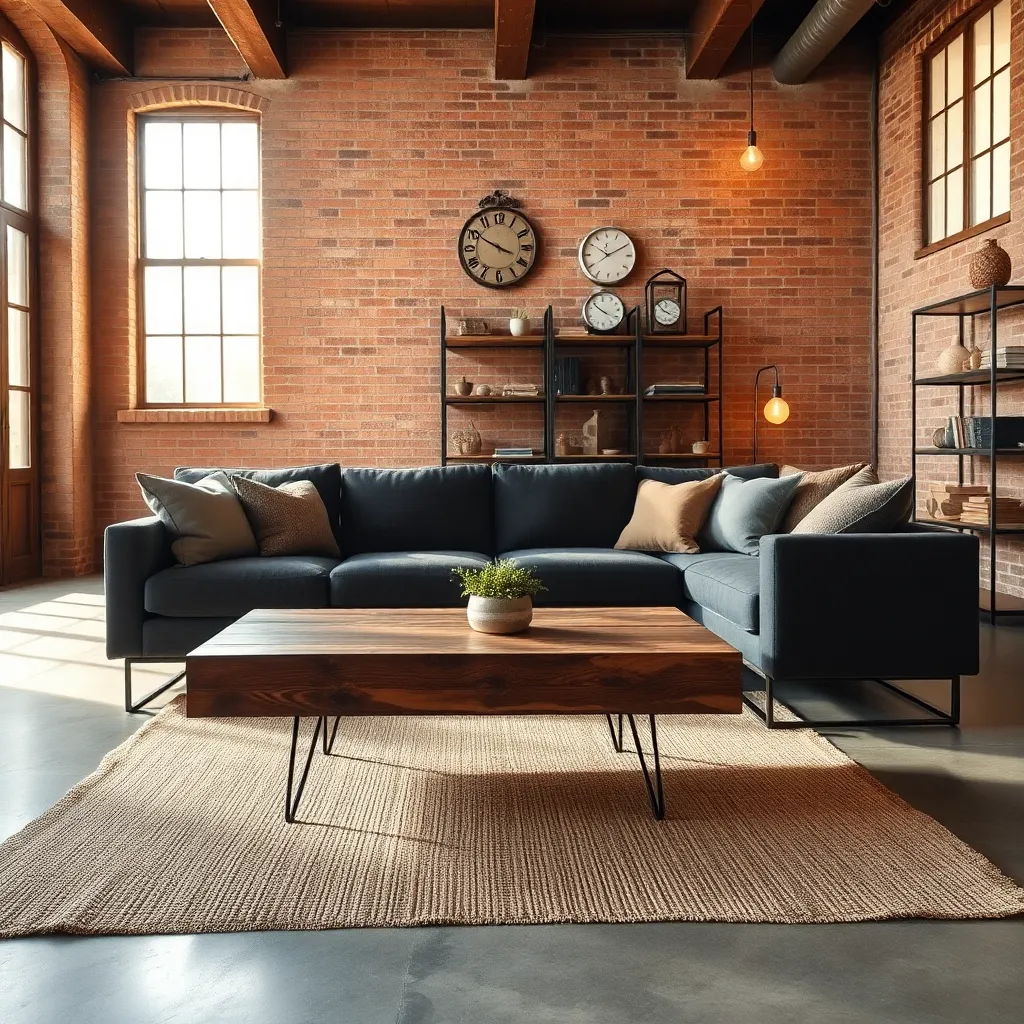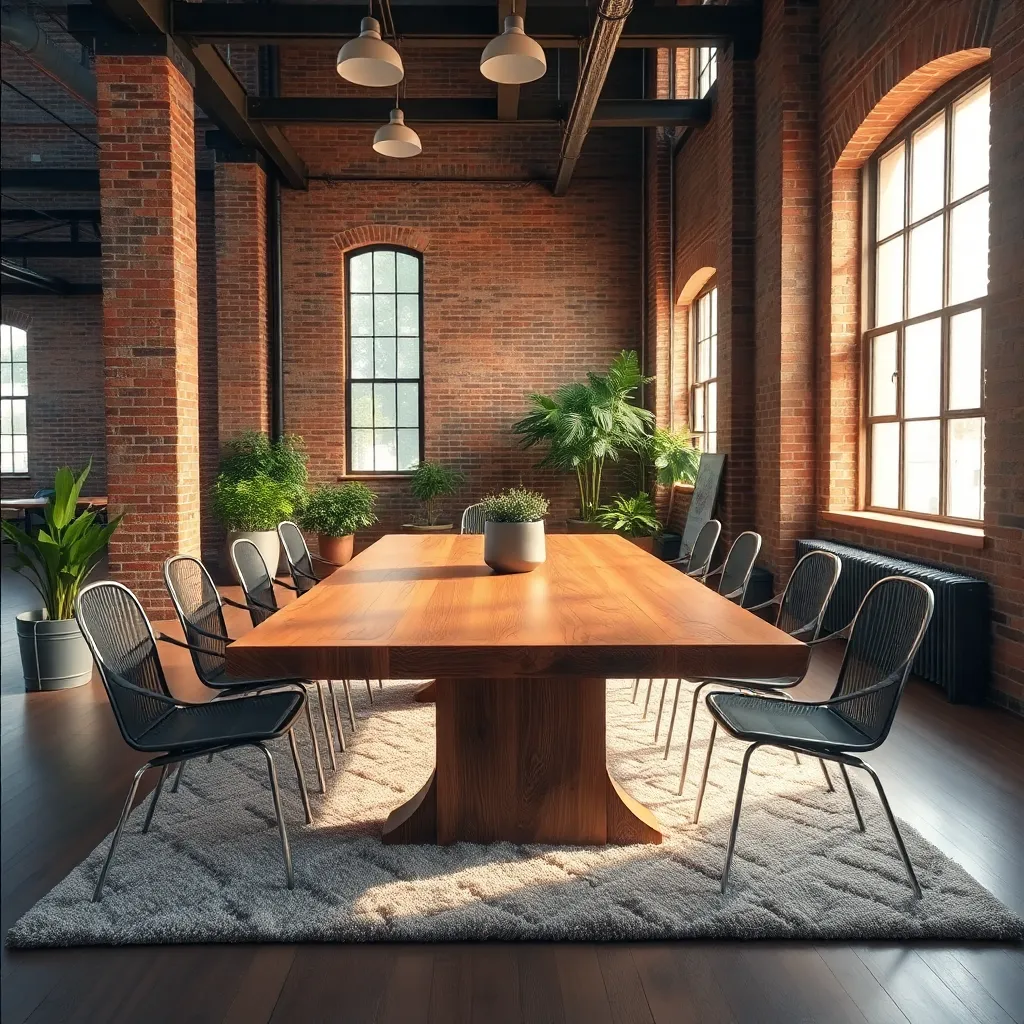Welcome to the captivating world of industrial-style furniture, where raw materials meet sleek, functional design. Whether you’re just beginning your decorating journey or you’re a seasoned pro, the industrial style offers a refreshing blend of rugged simplicity and modern sophistication that can transform any space into a haven of creativity and comfort.
In today’s fast-paced world, industrial-style furniture stands out for its unique ability to combine aesthetics with practicality. This design trend isn’t just about exposed pipes and concrete walls; it’s about celebrating the beauty of imperfection and the charm of vintage elements. Our exploration will guide you through the essentials of selecting pieces that embody this style, from sturdy metal tables to distressed leather chairs that tell a story.
You’ll discover how to seamlessly integrate industrial elements into your home, balancing the raw with the refined to create a space that’s both inviting and inspiring. We’ll delve into the nuances of mixing materials and textures, helping you to cultivate a cohesive look that reflects your personal taste. By the end of this article, you’ll be equipped with the knowledge and confidence to embrace the industrial aesthetic, making it your own in a way that feels effortlessly chic and entirely livable.
Understanding Industrial Design Origins

Industrial design finds its origins in the late 19th and early 20th centuries, a time when factories and warehouses defined the landscape. This style emerged as a celebration of raw, utilitarian spaces, transforming them into functional and aesthetic environments.
To incorporate industrial design into your home, begin by selecting furniture pieces with a focus on raw materials like metal, wood, and concrete. Consider using open shelving made of reclaimed wood and metal brackets to bring in authentic industrial charm.
Color palettes in industrial design typically consist of neutral tones such as gray, black, and white, with occasional earthy hues. Enhance your space with metal furniture in matte finishes, paired with leather upholstery for a rugged yet sophisticated look.
For those looking to delve deeper, mixing vintage and modern elements can add a layer of complexity that elevates the aesthetic. Opt for pieces like a vintage industrial cart as a coffee table, which adds both function and a historical narrative to your space.
Key Characteristics of Industrial Furniture

Industrial furniture is defined by its use of raw materials and utilitarian design, often characterized by a rugged, unfinished look. To achieve this style, opt for pieces made of metal, wood, and concrete, which offer durability and a sense of authenticity to your space.
Incorporating industrial furniture in your home can start with selecting key pieces like a metal-framed coffee table or a wooden dining table with visible grain. These elements can serve as focal points that set the tone for the entire room, providing a solid foundation for the rest of your decor.
Color plays a significant role in industrial furniture, typically favoring a neutral palette with shades of gray, black, and brown. To add depth and contrast, consider incorporating textures like distressed leather or rough-hewn wood alongside these colors, which can enhance the tactile experience of the room.
For those looking to add a touch of sophistication to their industrial-themed spaces, consider blending in modern elements like sleek metal chairs or minimalist lighting fixtures. This approach not only adds a layer of complexity to the design but also ensures the space feels both functional and stylish.
Selecting Materials for an Industrial Look

When selecting materials for an industrial look, focus on using raw and unfinished elements that showcase authenticity. Opt for materials like reclaimed wood, exposed brick, and steel, which embody the industrial aesthetic seamlessly.
Reclaimed wood is particularly effective as it adds warmth while maintaining a rugged charm. Consider using it for furniture pieces such as dining tables or shelving to introduce a natural element that contrasts with metallic features.
Exposed brick walls can serve as a stunning backdrop in any room, contributing a textured, urban vibe. If real brick is not an option, consider using brick veneer or wallpaper that mimics the look, offering a practical alternative for renters or budget-conscious decorators.
Steel and metal accents are quintessential in industrial design, offering a cool, sleek contrast to wood and brick. Incorporate these materials in furniture frames, light fixtures, and hardware to achieve a cohesive look that feels both modern and timeless.
Additionally, consider using materials like concrete for surfaces such as countertops or flooring. Its neutral gray tone provides a perfect canvas for highlighting more distinctive pieces in your space.
For an advanced touch, mix in glass elements to add a hint of sophistication and counterbalance the heaviness of industrial materials. Glass tabletops or pendant lights can create an airy feel while maintaining the aesthetic integrity of the industrial style.
- Pair reclaimed wood with steel frames for a classic industrial furniture look.
- Use concrete finishes sparingly to avoid a too-cold atmosphere, balancing with warmer materials.
- Combine textures like leather and wool with your industrial materials to introduce comfort and warmth.
Incorporating Industrial Pieces in Living Spaces

One effective way to incorporate industrial pieces into living spaces is by choosing furniture made from raw materials such as metal, wood, and concrete. A metal-framed coffee table or a reclaimed wood bookshelf can instantly add an industrial vibe without overwhelming the space.
Consider balancing industrial elements with softer, neutral tones to prevent the room from feeling too stark. Soft cushions and throws in muted colors like beige or gray can complement the ruggedness of industrial furniture beautifully.
For beginner decorators, start small by introducing industrial lighting fixtures such as exposed bulb pendant lights or metal floor lamps. These can serve as focal points and are easier to swap out if you decide to change the look later on.
Advanced decorators might explore integrating industrial-style shelving units that combine wood and metal, offering both functionality and a chic aesthetic. Position these shelves against a brick or concrete wall for an authentic industrial backdrop.
To enhance the industrial feel, pair furniture with textured accents like a leather sofa or a vintage rug. This combination not only adds warmth but also helps define the space, making it inviting and comfortable.
Finally, embrace the imperfections that come with industrial pieces—scratches and patinas add character and depth. Remember, the beauty of industrial design lies in its blend of ruggedness and refinement, making each piece a statement on its own.
Maintaining and Caring for Industrial Furniture

Industrial furniture is known for its durability, but proper care is essential to maintain its rugged charm. Start by regularly dusting metal surfaces with a soft cloth to prevent rust and buildup, which helps preserve the furniture’s integrity.
Wooden elements in industrial furniture require specific attention to maintain their natural warmth. Applying a quality wax or oil every few months can protect the wood from drying out and enhance its inherent grain pattern.
Consider the placement of your industrial furniture to minimize wear, especially in high-traffic areas. Metal legs and frames can benefit from felt pads, which protect both the furniture and your floors from scratches.
For upholstered pieces, vacuum the surfaces regularly and spot clean with mild soap and water as needed. Selecting durable, easy-to-clean fabrics like leather or microfiber can further simplify maintenance while complementing the industrial aesthetic.
Conclusion: Growing Success with These Plants
In exploring the unique allure of industrial-style furniture, we uncovered five key relationship concepts: the importance of blending contrasting elements, the beauty of authenticity, the strength found in solid foundations, embracing imperfections, and the value of sustainable choices. These principles not only enhance your living space but also serve as a metaphor for nurturing healthy, balanced relationships.
To put these insights into practice, take a moment today to identify one area in your relationship where you can apply these concepts—whether it’s embracing each other’s imperfections or reinforcing your relationship’s foundation.
Remember, relationships thrive on continuous learning and growth. Bookmark this article to revisit these timeless principles and inspire ongoing improvements in your partnership.
As you move forward, let these insights guide you toward a future filled with relationship success, where harmony and authenticity are at the forefront of your interactions. With each mindful action, you are building a durable and beautiful relationship that echoes the very essence of industrial-style elegance. Save this article now, and let it be your compass in navigating the intricate art of relationships.
